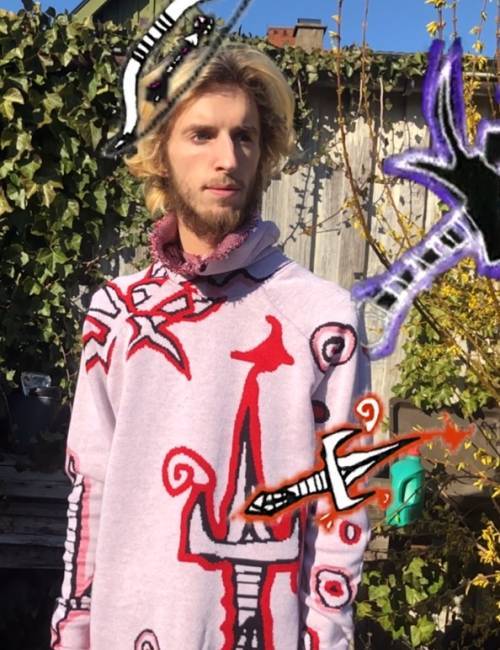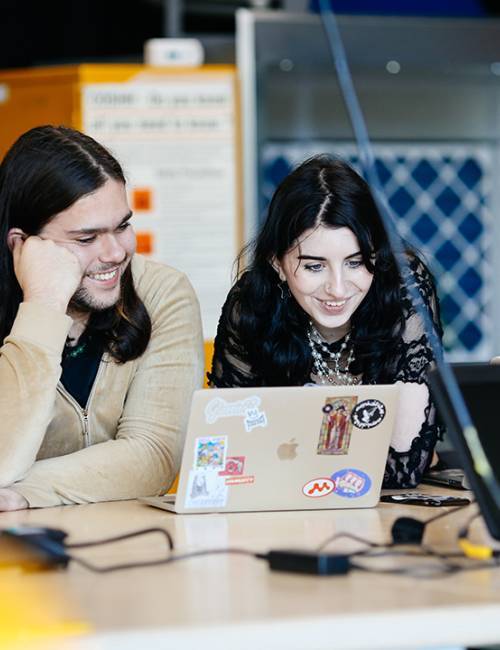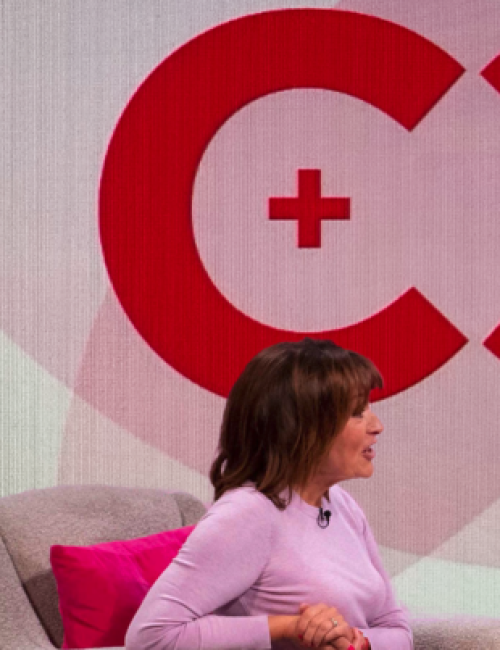The power of self-initiated study: The Ravensbourne Unit

Emelie Helsen, Ravensbourne's Mindsets and Skillsets Coordinator, discusses how in the wake of the pandemic, second-year students have dug deep to discover their own inner strength and drive in their work for the annual Ravensbourne Unit. And how students, staff, and guest speakers have come together to create a space to share ideas and collaborate outside the realms of normal teaching.
Introducing the Ravensbourne Unit
We’ve been running the Ravensbourne Unit for a couple of years now. This is a 15-credit unit for all second-year students – apart from architecture students who have their own separate assessments.
The unit is about students taking personal responsibility for their own learning and also for their role in society. As creative folk, now and in the future, we want them to really look at how they can impact the world.
During the main week of delivery, we suspend the curriculum, meaning students don’t have any other classes. We introduced the unit to the students beforehand during briefings and via the online platform, Aula. During that week we have an intense delivery of engagement time and students then get three weeks to complete their projects.
A hands-off approach
Obviously in previous years students have been working on this unit in the building and in close proximity to their peers and course tutors. However, in the midst of the pandemic, we knew we had to do things differently this year. And I know I’m biased, but in all honesty, I think this year’s unit was better because of this.
One of the key considerations for the unit was that we wanted to be very mindful of students’ individual circumstances and everything they could be going through during such a difficult time.
Keeping momentum going after a year of the pandemic wasn’t easy, for students or staff. But we knew that there are always certain principles that the unit has. It has to work across disciplines, so the themes have to be broad enough to resonate with students from all our different courses.
We knew that Wi-Fi wasn’t on everyone’s side while working from home, and people are tired. We were conscious that students might not have the headspace to take on another unit, on top of everything else going on. So we knew we had to tread carefully.
Artwork for the unit by students Safiyyah Henry and Keisha Gaspar.
Exploring the concept
In terms of the concept, we deliberately kept it very open and vague. The reason for this was to encourage students to really take the brief away and think: “What does this mean to me? How do I want to interpret this?”
The inspiration for the project was ‘noise, sound or music’. And the themes students could choose to develop around this were: future, voices, borders or fake.
So students went away and initially identified a sound. This could be anything from a piece of music to an everyday sound like the tap running. But it was this sound that had to act as the spark of inspiration. This acted as the catalyst to explore a certain issue in their lives, or in all of our lives.
The important thing was that students showed their whole working process – from inception to the development of the idea and throughout their research process. This is what they would get marked on.
Students were given three weeks to complete the assignment, and obviously in such a short time we weren’t expecting a polished result. We just wanted to be able to see how they got from point A to point B.
It could just be the start of an argument, or an idea to look at an existing model in a different way. It could be a prototype. It could be a storyboard for a short film. If students wanted to look at say, producing an ethically sourced garment, then how would they go about doing that? What are the steps they would take?
intro video

hide title
The Ravensbourne Unit conference
To help inspire the students, we also held a three-day virtual conference during the ‘contact time’ week. This brought together students, lecturers, staff and guest speakers from different industries to collectively share ideas and experiences.
For Ravensbourne, we’ve never organised a virtual conference of this size before – in the end it had around 65 different sessions across three days.
The breadth and variety of the speakers and the themes they discussed were really astonishing. We had people talk about the omission of minority groups within the history of fashion, to how to code and how to create a visual map.
Students really engaged throughout: everyone was talking and sharing in a way that they wouldn’t during a typical lesson. It went way beyond the realms of normal teaching. We had breakout chats about whether we felt Black Lives Matter protests from the summer made a difference and had some really frank conversations with the students about tuition fees. Someone came in to talk about the link between climate change and colonisation – such fascinating stuff!
Exploring and shaping ideas
Out of all of my interactions with students, I didn’t hear one bad idea. I’ve been super impressed and I’ve learnt a lot too!
While some students were trying to find very aesthetically creative solutions to the brief, others might be like “oh I want to investigate it from a scientific standpoint, is that okay?”
When it comes to this unit, there really is no right and wrong. Personally, it has shown me how wonderfully unique our minds are in solving problems, and how incredibly talented our students are.
The working world doesn’t just function one way, does it? So, students were free to find whatever path worked for them. One student chose the sound of a flush that inspired them to look into water wastage in Italy. Someone else chose an NWA song which inspired them to look into police brutality and come up with a vetting system for police officers in America. Unsurprisingly, mental health in students during the pandemic has been the number one issue students have been looking into.
I am currently working through assessing everything, and it really is a joy to go through the students’ work. Every day I find myself saying: “Woah look at that.” With all the hurdles these students have had to overcome with Covid and not being able to go into the building, I really am in awe at what they’ve achieved.
Self-initiated study
The unit has really empowered the students to look inwards and realise that they all do have the autonomy to think for themselves. This has been one of the biggest lessons learnt, I think.
While some students are straight off the mark and right away take their learning into their own hands, others are naturally more cautious and dependent to begin with.
Because this unit was so open-ended, it was challenging for many students, who are used to the structure found within other units. This unit has forced those students to really go beyond their comfort zones – to look inside and see what matters to them and to understand more about how problem-solving works.
When it comes to problem solving, some students are tactile learners, and some interpret the world through images and visual cues that make the most sense to them. Others are more logical, so a mathematical or scientific approach might resonate with them more. It is fascinating to see students begin to understand that for themselves and really work with their natural talents.
One of the main outcomes of the unit is that students develop their project management and time management skills. They’ve also had to research and network to reach out for information – all these skills are so valuable in the workplace.
Despite the obvious challenges that Covid posed to the delivery of the unit, all-in-all I think this year has been the best yet. The way that students tackled the brief was really inspiring, and the Ravensbourne virtual conference was a success. I want to say a massive thank you to everyone involved. And to all our students, you are truly brilliant!







